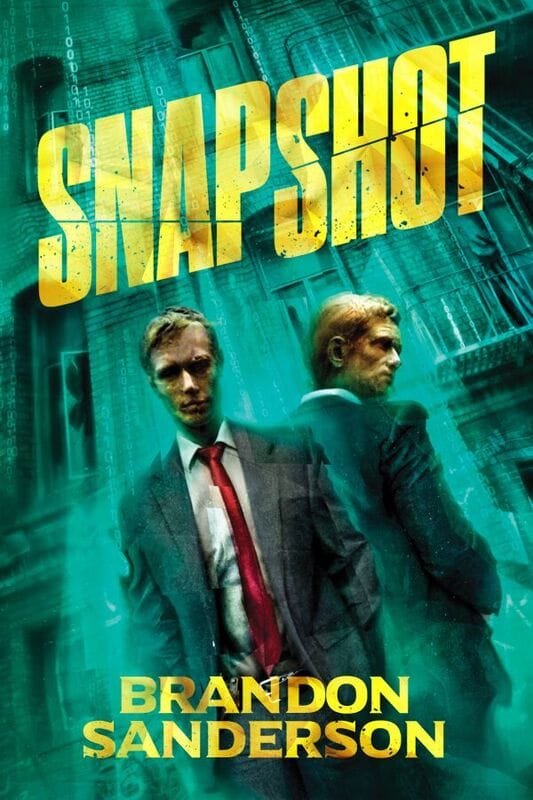
Snapshot is the recent “between novellas” project by Brandon Sanderson. This one is a little different, a science fantasy near-future world where police can create these “Snapshots” which are direct copies of the world before a crime occurs. Police can go into these snapshots and investigate by seeing what actually happened for a period of hours. Any action they do inside creates ripples called “deviations” which tarnishes the evidence, so they have to be careful. It’s not explained how this works, or really anything about it other than a cursory “I don’t know how it works” by the main character, which is why I call it science fantasy. I’m fine with that, as it’s a neat concept. It reminds me a little of his 2016 novella, Perfect State, in the sense that this is a tech-driven story rather than a magic one.
Because Sanderson’s books are so twist-dependent, there will be spoilers. If you want to avoid those, stop reading now.
This story follows two detectives who are investigating a murder, but that’s not the main crux of it as they solve that relatively quickly. There’s a serial killer on the loose that they discover, that the department hasn’t been talking about or letting them in on at all. It’s not abnormal as they’re snapshot investigators, separate from the rest of the force, but it does appear it’s covered up. They take it into their own hands during the snapshot time left to uncover this information and catch the killer.
The characters are a little hard to connect to. Sanderson’s been using a formula lately of straight man / comic relief buddy, and while it’s okay once or twice, I’m seeing it as a pattern in all of his work that made this a bit rough. I really didn’t start connecting with the characters or being interested until about 25% into the book, where some personal stuff develops that makes it a little more interesting. Still, they come across as vehicles for a plot or comic relief jokes a lot of time rather than real characters.
This is a short book so I’m going to jump to where it gave me the biggest problem. Sanderson also does a “two-stage twist” in all of his books. He gives you one where it’s obvious and you’ll call well in advance, in order to lull you reading wise into not realizing what the big twist is. Since again he employs this formula with extreme regularity, I was prepared for it. What threw me off was what happened. The twist was that the main perspective character was in the snapshot to uncover his partner boinking his ex-wife and kill him for betrayal. It’s actually a cool plot point, but the problem is– it was the perspective character. We went along the whole book without the guy thinking about killing his partner. There were points he was mad at him, calling him a liar, but it seemed almost in fun. He was never concerned about the event until it happened, which means the reader was cheated the entire time to put a twist in there. The story fell apart for me because of this. This was the “twist you don’t expect”. The twist that you do expect was that this was a snapshot of a snapshot to investigate this whole thing, which we discover later on. Usually the order of these are reversed for Sanderson — and in the essay after in the collector’s edition, he does address that he would have liked to have reversed those but didn’t find a way to in the story — but that was pretty flat and expected, and I didn’t buy the big twist because of the above.
With low character work that made the story tough to get into, and a twist that imminently didn’t work and felt forced for the sake of it, this is probably my least favorite Sanderson work to date. I really wanted to like this, and read it fairly quickly — as the pacing is the element that saves this, but found that this story didn’t work at all. 5/10

Leave a Reply